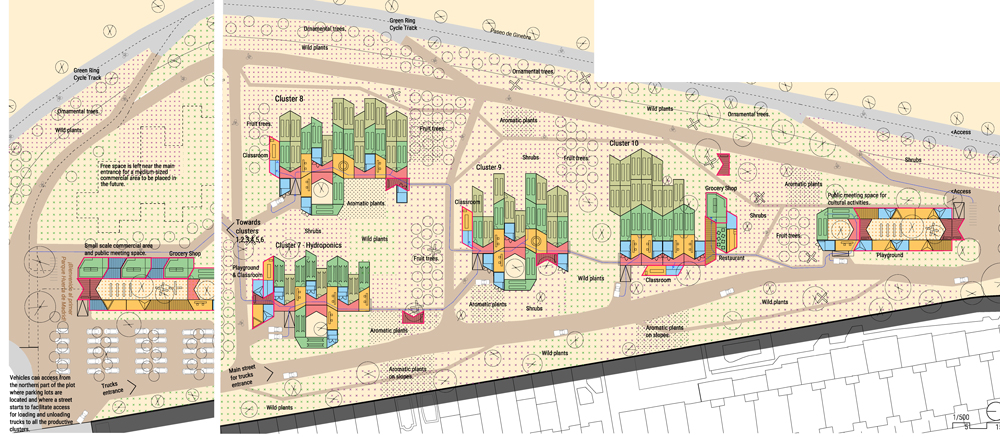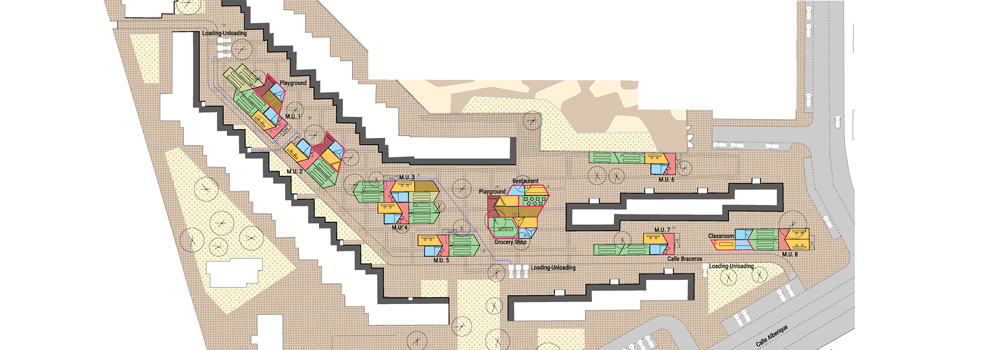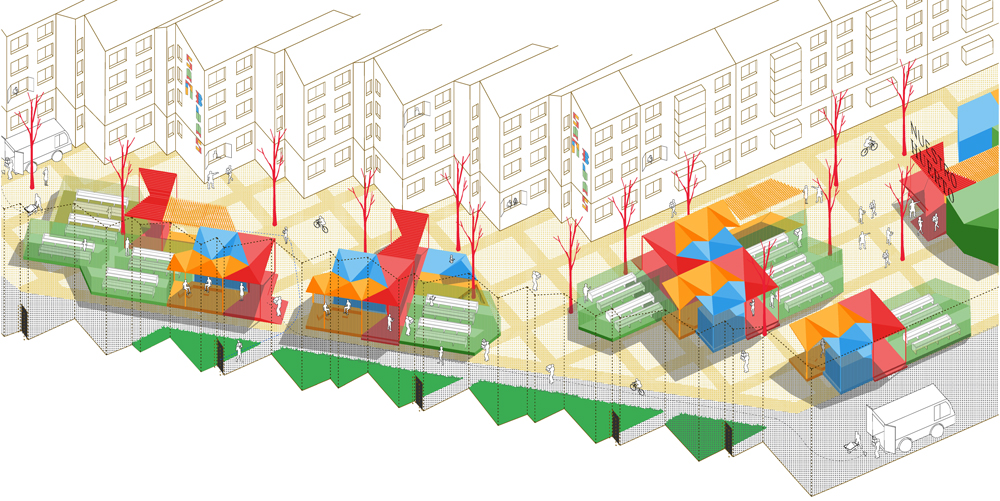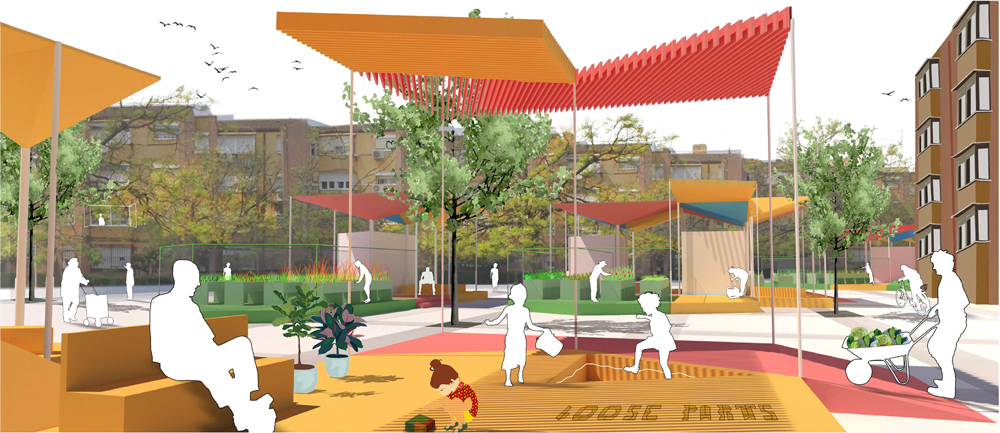Loose Parts
Year | 2021
Location | Madrid (Spain)
Type | Competition -Europan 16-. Special Mention
Use | Urban Garden
Authors | Katerina Psegiannaki, Ana González, Lucia Sanchez
In any environment, both the degree of inventiveness and creativity, and the possibility of discovery, are directly proportional to the number and kind of variables in it.
Simon Nicholson.
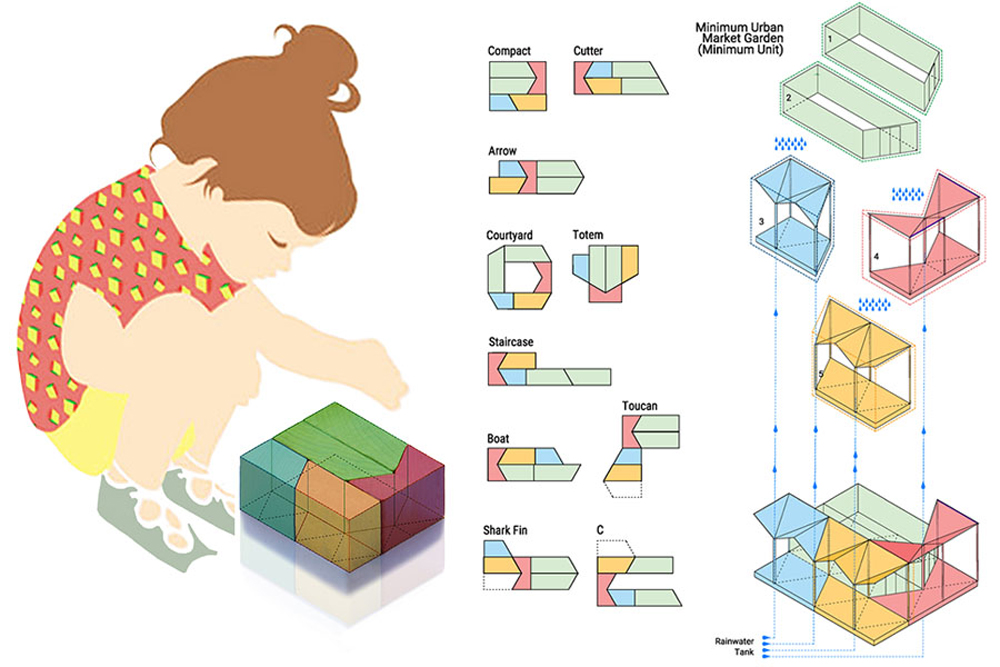
In his theory of «loase parts», Simon Nicholson defines them as those variables or elements that anyone can play, experiment, discover, invent and have fun. These variables according to Nicholson can be materials and shapes; smells and other physical phenomena, such as electricity, magnetism and gravity; media such as gases and fluids; sounds, music, motion; chemical interactions, cooking and fire; and other humans, and animals, plants, words, concepts and ideas.
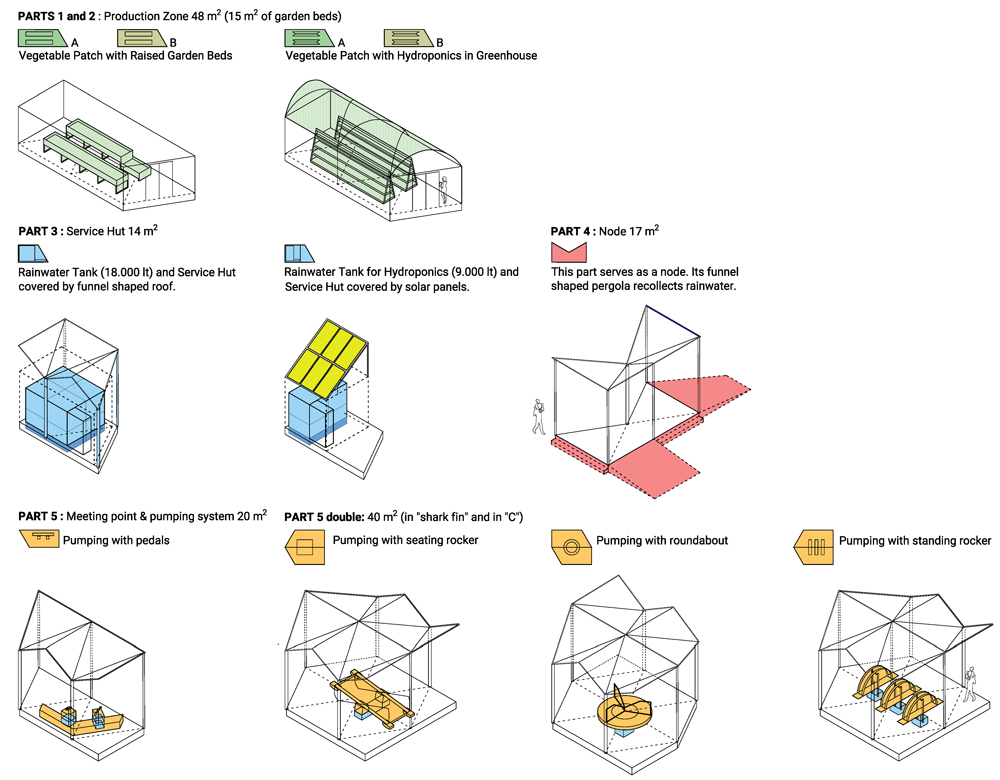
A set of five parts are designed to cover the basic needs of a minimum water-sufficient urban market garden. With these parts the community can play and adapt them to different places and needs, enabling a basic structure for farming in the city and at the same time enhancing their own inventiveness and creativity.
These parts are designed in a way that the minimum unit can be water sufficient and provide several variables depending on the type of the market garden and it water needs. • Playing is key when it comes to watering by means of a pumping system that offers different game formats for emptying the accumulated rainwater tanks. This system involves young and old in the ca re of the vegetable patches that can be done in a playful way while creating an intergenerational community.
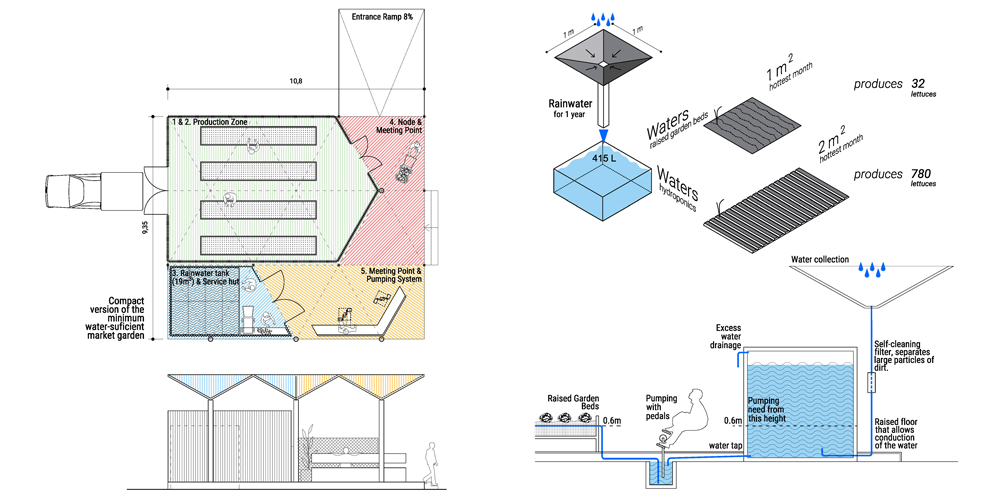
What is special about the proposal of a minimum urban market garden is its water-sufficiency. Its roof has the possibility to collect the rainwater that the vegetable patches need to be watered. This water is stored in a tank and unless extreme drought the minimum unit can always be productive without burdening the city’s water resources system. Moreover, rainwater is the best option for plants, because it penetrates deeper into the earth than drinking water and carries nutrients to deep areas of the roots.

